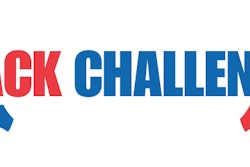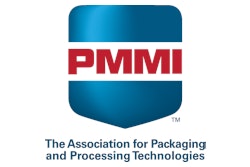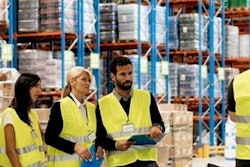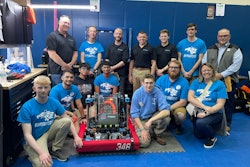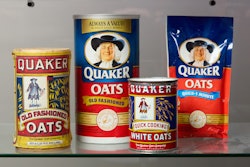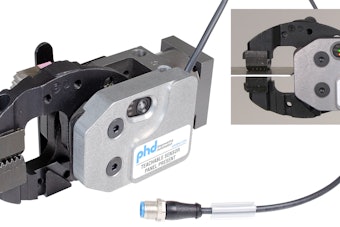Quick hits:
- This was the first time in two years that Greenbiz’s Circularity conference and Smithers’ E-Pack Europe event have been held live since the beginning of the pandemic.
- Over the last two years, molecular recycling for packaging has made great strides, with a range of new technologies having been proven out and investors building production-scale plants.
- The rise of online shopping during COVID has resulted in consumers’ desire for more sustainable e-commerce packaging, a topic that was front and center at E-Pack Europe 2022.
- Live from Circularity 22: Grove Collaborative Continues to Push ‘Beyond Plastic’
- Amazon: Transformational Change in E-comm Packaging Begins Upstream
- Planning Your E-Comm Package’s Funeral: Considerations for Designing for End of Life
 | Read the transcript below: |
Hello, this is Anne Marie Mohan, Senior Editor of Packaging World, with Take Five.
I recently attended two packaging conferences, Circularity 22 and E-Pack Europe 2022. They were the first live events I’ve been to since the pandemic began. It was also the first time these conferences had been held live since 2019. Attendees were definitely energized at both, as they reconnected with colleagues and enjoyed networking in-person. It was also a bit surreal, as the conference content seemed to have jumped light years’ ahead while we were sequestered at home.
Circularity 22, held in Atlanta, in mid-May, focused on strategies to catalyze the circular economy in a number of industries, primarily packaging, but also textiles and electronics. One presentation of particular interest was a four-hour track on advanced recycling. What I found fascinating was how far the technology has come in the space of two years. Right before the COVID shutdown in February 2020, I was at The Packaging Conference, where a significant portion of the event focused on the topic. But at that time, a lot of it was theoretical, and there weren’t really many commercial examples to point to.
That’s all changed now. While many of the technologies are not yet scaled up, they’ve been proven, and technology providers are investing in massive production-level facilities. New commercial applications are being reported on every day using materials that are the result of advanced recycling.
During the track, Paula Luu, Senior Project Director of Closed Loop Partners, shared results from the organization’s recent report on molecular recycling in the U.S. and Canada. Luu explained that advanced recycling encompasses dozens of transformational technologies that use solvents, heat, enzymes, and even sound waves to purify or break down plastic waste to create polymers or the molecular building blocks to create new polymers. Said Luu, together these technologies can expand the scope of waste we process today.
She also shared two other very promising takeaways. First, integrating molecular recycling technologies into plastics recycling systems in the U.S. and Canada could double the amount of plastic packaging recycled compared to 2019 recycling rates, and could generate up to $970 million dollars annually. Second, the average carbon emissions from producing plastic through all three categories showed an improvement compared to corresponding virgin plastics systems, with environmental impacts varying within and across the technology categories.
But, she noted, and panelists throughout the four-hour presentation agreed, advanced recycling is not the be all and end all; it needs to be part of a multi-pronged strategy to address the plastic waste problem.
Welcome back. As I mentioned, I also recently attended E-Pack Europe 2022, in Amsterdam in mid-June. Although it was an e-commerce packaging event, I could have been forgiven for thinking it was a sustainability conference, with some information thrown in about e-commerce. That’s how big the focus on sustainability has become in every area of packaging. In talking to one of the speakers after her presentation, she noted that the last time E-Pack was held live, the talk was all about unboxing and ISTA testing. Again, what a difference two years can make.
One reason sustainability has risen to the top of consumers’ concerns when it comes to e-commerce packaging is that during the pandemic, the increase in online shopping and the resulting glut of packaging on consumers’ doorsteps made them more aware of excess packaging. Especially aggravating for consumers is overpackaging and packaging that can’t be disposed of responsibly.
One brilliant solution discussed at E-Pack, and one we’ve covered before in Packaging World, is an on-demand boxmaking system from Italian company CMC. Its line of CartonWrap machines produces boxes from fan-folded corrugated in real time, each one sized exactly to fit the products that will be packed inside. Print and labeling systems can also be added to personalize the packaging. Its next-generation machine, the CMC Genesys can be directly connected to a company’s warehouse storage through the CMC Patented VaryTote system. Orders are automatically picked and consolidated in the CMC VaryTote, which is directly conveyed to the Genesys auto packing system.
Amazon recently announced that it is investing in CMC technology through its Climate Pledge Fund and is currently using some of the machines at its facilities.
Be sure to check out our website and the pages of Packaging World for more coverage of Circularity 22 and E-Pack Europe.
That’s all for this edition of Take Five.
